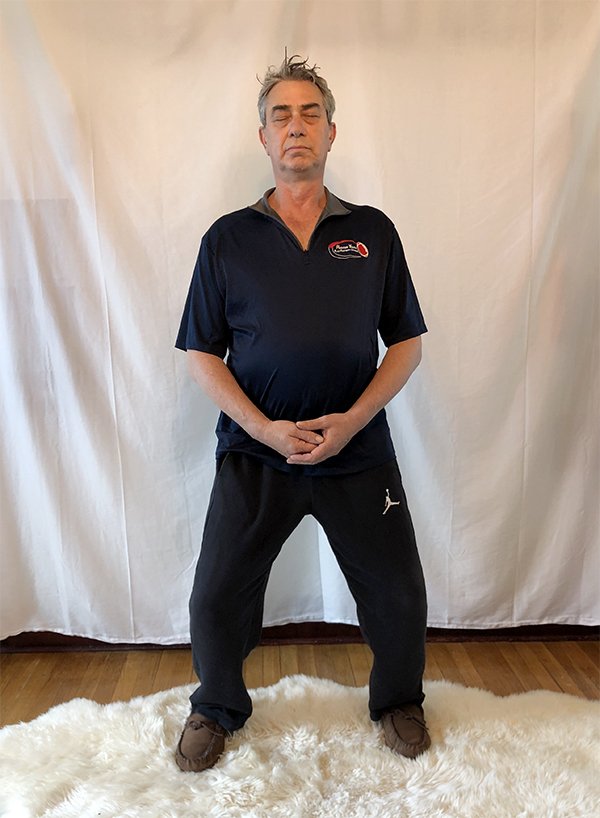To relieve, deal with and eliminate fatigue I have created a Mind-Body routine based the eastern health and martial arts philosophies, Chi Kung, Tai Chi, and Meditation. My experience working with different ages, abilities and backgrounds in groups and for individuals has given me insight into the different ways fatigue effects people and some easy techniques that help.
Fatigue on one hand could be because of weakness which according to Chi Kung and Chinese medicine is being too Yin. For example, weak muscles or what is called Sarcopenia or “vanishing flesh,” weak bones or osteoporosis, a collapsed posture, pain, shallow breathing, negative thoughts and emotions or over-sleeping are considered Yin.
On the other hand, fatigue can happen from being too Yang; tense muscles, swollen and painful joints, fast breathing, stress, a hyper mind, or a lack of sleep.
Today, I will introduce you two mind body exercises for each situation: Yin and Yang.
A Mind-Body Prescription for Fatigue
YIN FATIGUE
“Up and Down like the Moon and the Sun”
First, I will show you an easy and simple way to increase leg strength and bone density with the visualization of the lower energy center. This mind-body prescription as I call it, is meant to reverse Sarcopenia and osteoporosis, quiet negative thoughts and emotions and move you from being Yin to being Yang.
We will learn and practice “Up and Down like the Moon and the Sun” from a chair with the legs together to strengthen the inner thighs and legs apart to strengthen the outer thighs. The Up and Downs help increase your heart rate and stimulate your lungs to breathe deeper. Adding the Lower Energy Center visualization calms the mind and helps reduce negative thoughts while at the same time strengthens your energetic system.
Download a practice guide for Up and Down Like the Moon and the Sun
Chair Sit Ups with Taoist breathing or Internal Organ Massage
Second, we will learn and practice Chair Sit Ups while moving the abdominal and back muscles in when you inhale and out when you exhale. Over time and with practice you will be able to add the visualization of the lower energy center, as well. This authentic health and martial exercise of moving the abdominal and back muscles in on inhalation and out on exhalation while visualizing the lower energy center is called Chi Kung and Tai Chi Taoist breathing.
Download a practice guide for Sit Ups
The Chair Sit-Ups and the movements of the back and abdominal muscles strengthen your core to support the spine. The continuous movement of the abdominal and back muscles massages your internal organs, removes stagnation, and increases circulation. Visualizing the lower energy center cleanses and then nourishes your internal organs and your spine.
YANG FATIGUE
Baby Mountain
First, we will practice a restorative posture I like to call “Baby Mountain” with deep breathing. This passive posture relaxes your lower back, neck, shoulders, and arms and can also relieve headaches and migraines. Baby Mountain stretches the spine and all the soft tissues around it. It helps relax the abdominal muscles and more importantly, the internal organs. This posture allows you to lead your breath into the back part of the lungs and empty your mind from any thoughts: you might even fall asleep.
Lying Down Relaxation
Second, we will concentrate on deep breathing while practicing the lying down meditation or relaxation with the legs at a 90-degree angle on a chair or pillows if you are doing it in your bed (a 90-degree angle is not needed when using pillows).
This lying meditation relieves the lower back and neck from stress. Use a pillow if needed. Elevating your legs allows the heart to not work as hard. This posture helps relax the internal organs, empty the mind, and can even lead you to fall asleep. If you want, put an eye bag on your eyes for a stronger experience.
Happy stretching, deep breathing, empty your mind, strengthen your energetic system and evoke your spirit!









